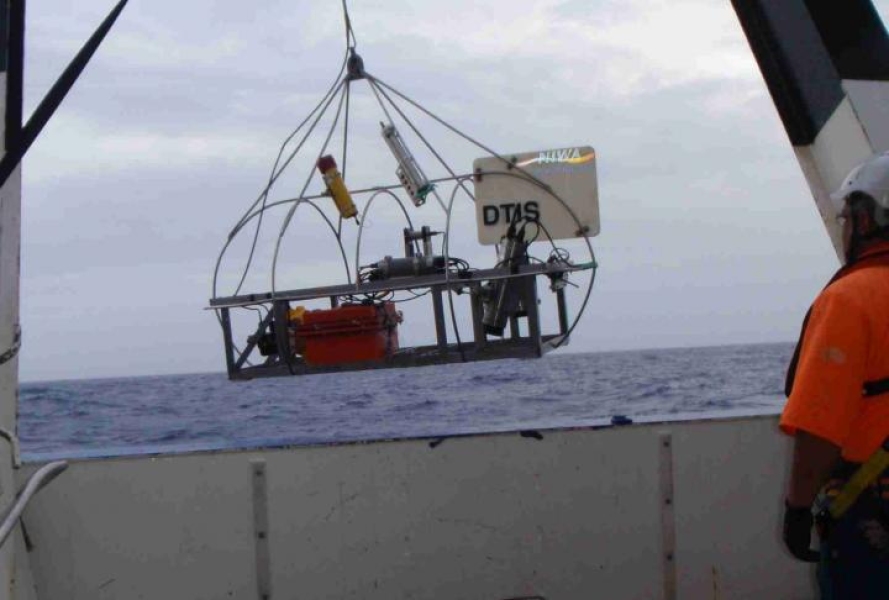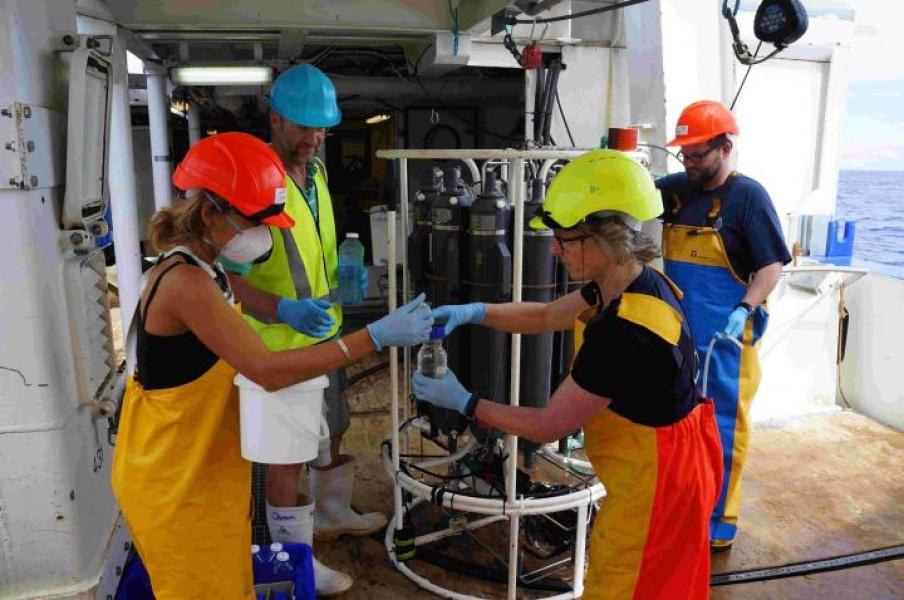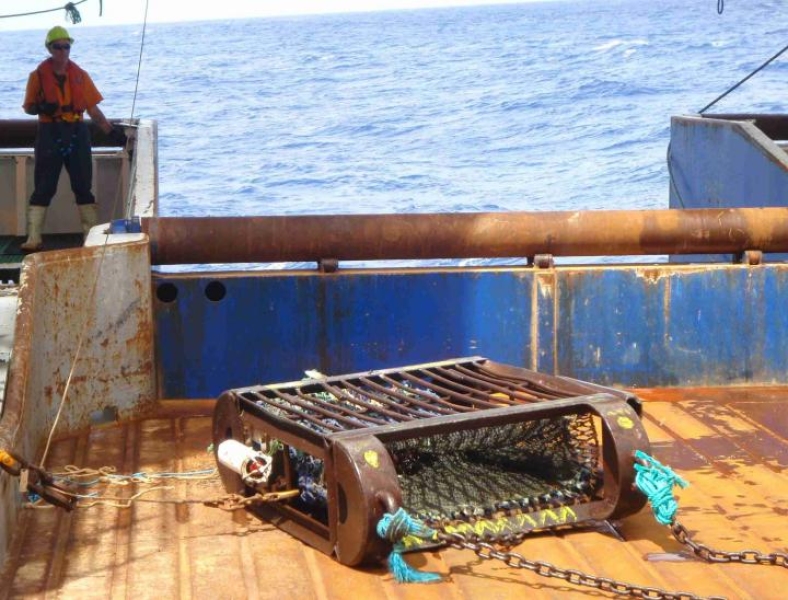In this post we look at the tools we are using to undertake our survey of the seamounts on our voyage to the Louisville Seamount Chain. On this voyage, we are using four main tools to undertake the survey.
- Multibeam Echo Sounder (MBES)
- Deep-sea cameras
- Epibenthic sledge CTD probe
The Multibeam Echo Sounder is used to map the seafloor before any other gear is deployed. Different from an echo sounder on a small boat, a MBES uses several hundred 'beams' of sound directed in a fan across the direction of the ship. As the ship drives in parallel lines several kilometres apart, thousands of these measurements are made of the depth of the seafloor. Once these are put together a complete picture of the seafloor is produced, which is later used to direct sampling operations on the seafloor.
Once a seamount has been mapped, we generate a series of site positions designed to test the predictive coral distribution model. The main tool we use for gathering data at each site is NIWA's Deep Towed Imaging System (DTIS), which is a camera frame containing video and still cameras that is towed slowly by the vessel recording the seafloor life from a distance of about 2 m. We tow for an hour, along transects designed to cover a variety of substrate and likelihood of coral occurrence.
When unusual animals are revealed by the DTIS, such as a representative collection of species or small patches of live coral, we may deploy our main direct sampling tool, the epibenthic sledge. This was designed at NIWA for use on seamount terrain, where a small but very robust type of sampler is needed to sample the rugged seafloor. The sledge is very effective at catching rocks for geological analyses as well as animals for the biologists. The catches enable us to confirm the actual species we are imaging by DTIS.
Finally, when we catch live coral, we may lower a CTD and rosette sampler that records the conductivity, temperature and depth to determine the conditions in which corals are living naturally. Water samples are collected at a range of depths, and decanted into sterilised bottles for analysis of their composition. This knowledge helps us replicate the environment and keep the corals alive back in the laboratory, to investigate the likely impacts that future changes in temperature and acidity of the ocean may have on the coral species.




